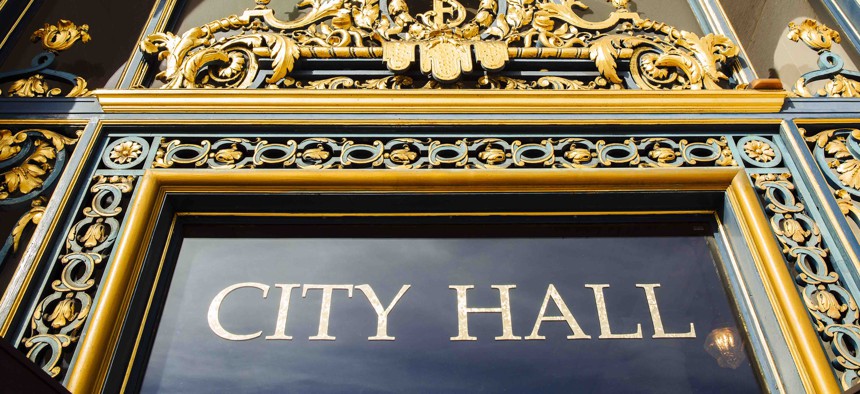Tackling the Tough-to-Solve 'Culture' Problem Many City Leaders Face

Getty Images/Inti St Clair
Shifting "organizational culture," the unwritten rules that dictate how work gets done, can be incredibly difficult in city halls. A new guide from a team of NYU professors aims to help change that.
When talking with mayors and other city leaders in recent years, Neil Kleiman, a professor of urban planning and public service at New York University, says there was a specific roadblock to the innovations and reforms that the officials wanted to pursue that kept coming up.
“I would hear again and again that it was culture. That culture was the No. 1 issue,” Kleiman said, meaning organizational culture within city government. “I found that incredibly interesting.”
“When you really look at culture, it’s ingrained; it’s almost like your DNA,” he added. “In any enterprise that’s very difficult to change.”
With a wealth of books, articles and workshops on molding organizational culture within companies, Kleiman had assumed public sector leaders had similar resources at their disposal. When he looked at what was available, though, he discovered that this wasn’t the case.
And so began a multiyear project to fill that void by developing tools that local officials can use if they want to try overhauling the organizational culture within their city government.
This work culminated in a guide, written by Kleiman and fellow NYU professor Alexander Shermansong, and released by the Bloomberg Harvard City Leadership Initiative on Thursday. It is geared towards mayors, city managers and agency leaders, among others.
The authors urge prospective users of the guide to ask themselves two questions:
- In order to advance your top priorities, will the current way of working at city hall— “business as usual”—be sufficient to succeed?
- In a typical interaction with city government, is a constituent usually satisfied or even delighted?”
For a city leader who doesn’t answer with a resounding “yes” to either of those questions, the report is perhaps worth a look.
In it, Kleiman and Shermansong present what they’ve dubbed the Culture Cascade Framework, a nine-step program they say can help lead to “lasting culture change” in city government.
They define organizational culture as “rules—formal or informal, written or not—that determine how work gets done.”
Their framework begins with a “leadership alignment” stage and steps like defining vision and values. It progresses to a “communications and decisions” phase where policies and budgets begin to reflect the new culture. Lastly, the organization reaches steps meant to ensure changes stick. These center on areas like hiring, data and training.
The authors emphasize that their framework does not endorse a specific type of culture. “That is a choice only local leaders can make,” they write. “But once a direction is chosen, this guide provides the tools to help implement it.”
A Heavy Lift in the Public Sector
Why the gap when it comes to initiating culture change in city government? Kleiman suggests it has to do with the many “layers of administrative functions and rules and processes” in the public sector. Whereas within a company, he noted, it tends to be easier to take actions like changing pay scales, hiring and firing workers, or shifting to focus on new pools of customers.
“I think the vast majority of public leaders recognize how important organizational culture is,” he added. “But then they also quickly realize after that how difficult it is to take it on.”
Included in the guide is a self-assessment rubric to help users along and real-world examples from three cities—Kansas City, Missouri, Louisville, Kentucky and Somerville, Massachusetts—of efforts to pursue the kind of transformation the authors are describing.
Kleiman and Shermansong point out that, across the U.S., they “found only a handful of municipal governments that have even attempted organizational culture change at scale.”
For city leaders in the daily trenches confronting some of America’s most urgent policy challenges, like affordable housing shortages, homelessness and the pandemic recovery, devoting time to examining city hall culture may sound like an overly conceptual exercise.
But Kleiman disagrees, arguing it is something mayors and other officials cannot afford to ignore.
“It would be to your detriment to focus exclusively on the services themselves without addressing the organization and management environment that surrounds them, that really dictates how those services are delivered,” he said.
The new guide, he said, is something of a “clarion call” for city leaders to take a deeper look at the culture within their governments.
“There’s a lot more that needs to be done,” he said. “This is not the last word on it.”
More about the guidebook can be found here.
Bill Lucia is executive editor at Route Fifty and is based in Olympia, Washington.
NEXT STORY: Invasive Insects Will Kill 1.4M Trees Across the US






